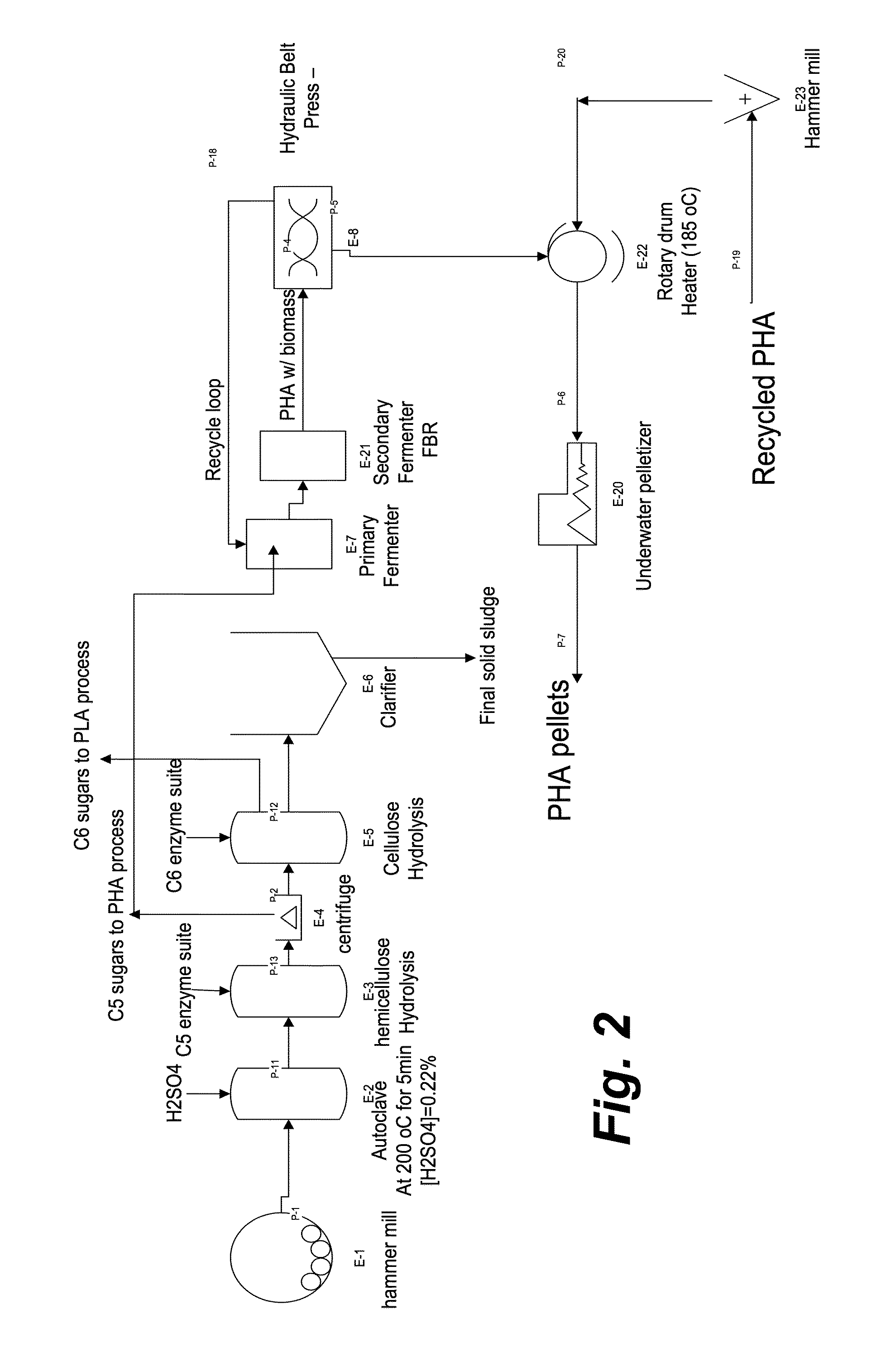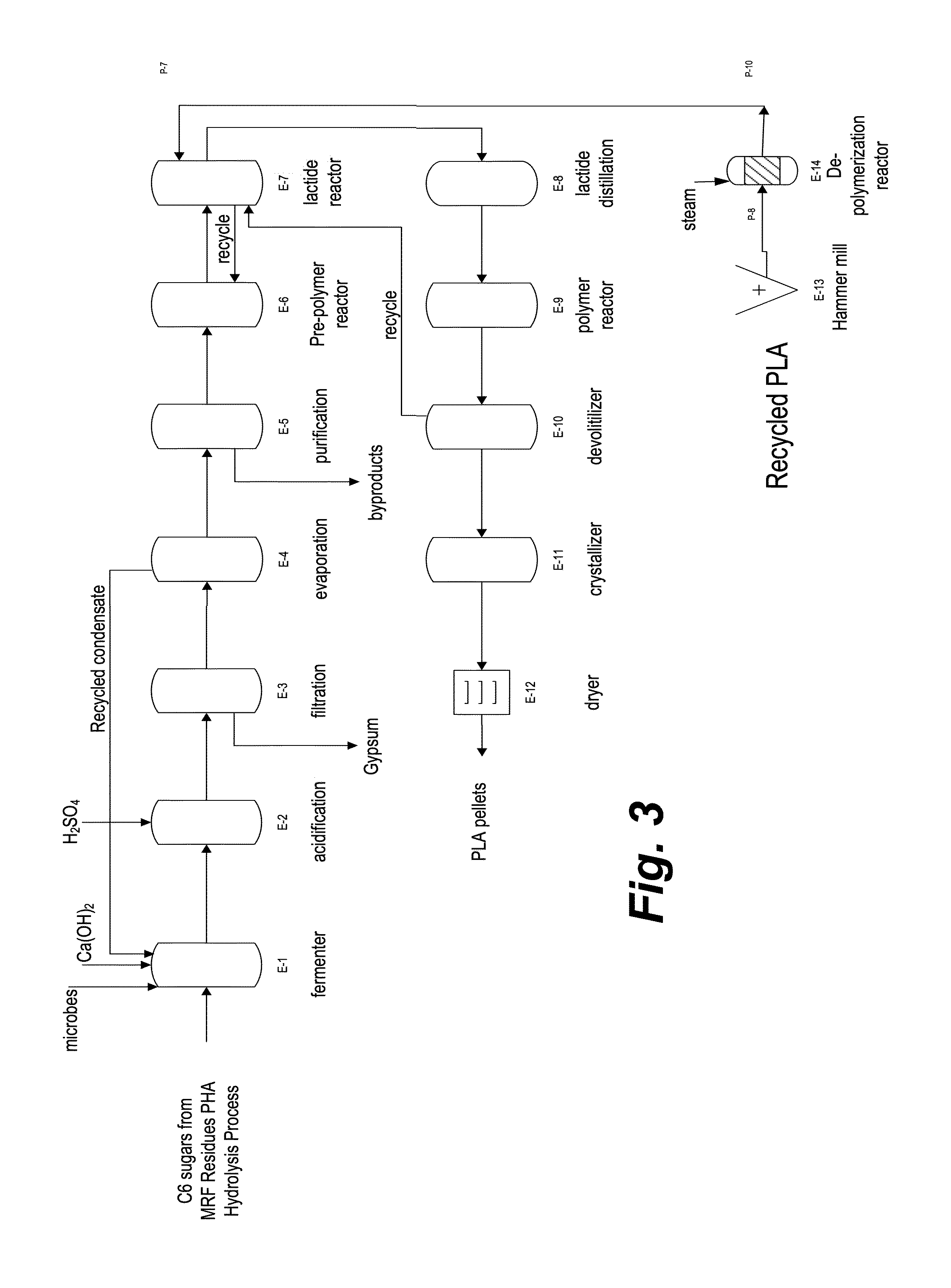Lactide Production from Thermal Depolymerization of PLA with applications to Production of PLA or other bioproducts
a technology of thermal depolymerization and production of pla, applied in the field of methods, can solve the problems of significant plastic ocean debris problem, cost, wider use, etc., and achieve the effect of avoiding transportation costs
- Summary
- Abstract
- Description
- Claims
- Application Information
AI Technical Summary
Benefits of technology
Problems solved by technology
Method used
Image
Examples
Embodiment Construction
[0020]Embodiments of the invention provide process lines to make three bioplastics in an environmentally friendly manner. One process line produces PHB from waste-derived methane. Another process line produces PHA from C5 xylose sugars hydrolyzed from MSW. A third process line produces PLA from C6 glucose sugars hydrolyzed from MSW.
[0021]The first process line, illustrated in FIG. 1, produces PHB from waste-derived methane (landfill gas) and recycled PHB. The process incorporates sustainable cradle-to-cradle aspects that use recovered PHB as feedstock. For the recycling steps, the PHB is first broken into small pieces by a hammer mill, and then melted in a rotary drum heater, or equivalent, to separate impurities and send the material to a pelletizer where new PHB product resin pellets can be formed. The PHB process from methane includes the methane landfill gas feed system, a primary fermenter to multiply methanotrophic bacteria cells, followed by a secondary fermenter to grow PHB ...
PUM
 Login to View More
Login to View More Abstract
Description
Claims
Application Information
 Login to View More
Login to View More - R&D
- Intellectual Property
- Life Sciences
- Materials
- Tech Scout
- Unparalleled Data Quality
- Higher Quality Content
- 60% Fewer Hallucinations
Browse by: Latest US Patents, China's latest patents, Technical Efficacy Thesaurus, Application Domain, Technology Topic, Popular Technical Reports.
© 2025 PatSnap. All rights reserved.Legal|Privacy policy|Modern Slavery Act Transparency Statement|Sitemap|About US| Contact US: help@patsnap.com



